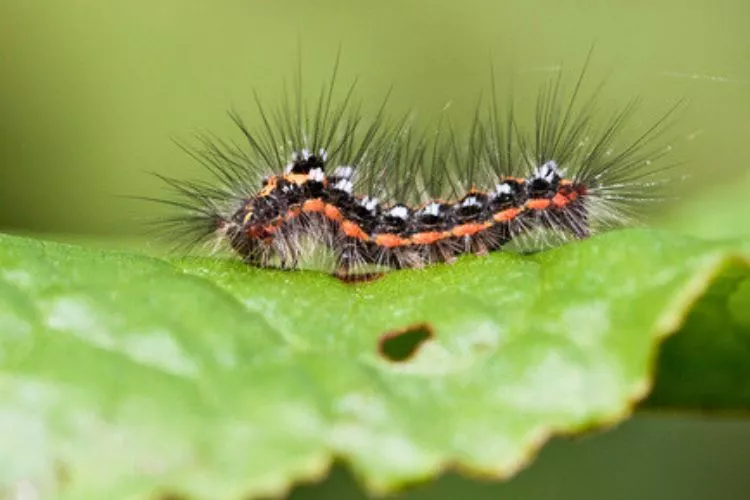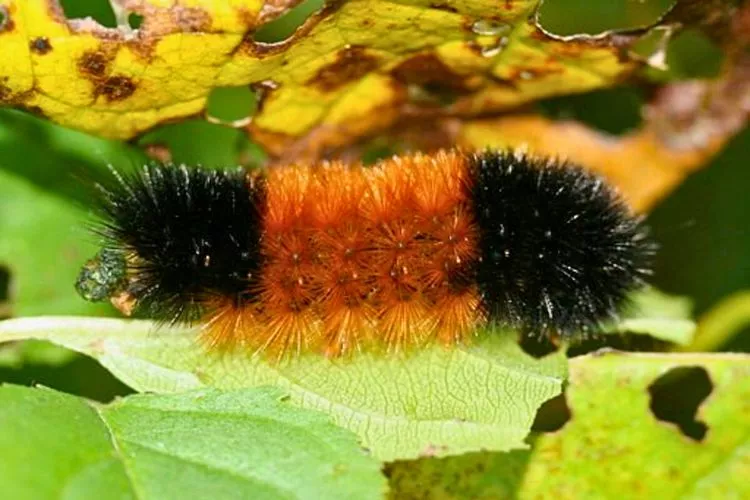Have you ever encountered a caterpillar flaunting a striking pattern of black and orange and wondered, Is this creature safe to touch?
Are black and orange caterpillars poisonous?
Well, you’re not alone. These intriguing little creatures often spark curiosity and concern in equal measure.
Knowing about their potential toxicity is not just important; it’s essential – especially for those of us who frequently enjoy the great outdoors or have little ones who are natural-born explorers.
Misidentifying a harmless caterpillar as poisonous, or vice versa, could lead to unnecessary worry or, worse, a painful surprise.

In this comprehensive guide, we will delve deep into the world of black and orange caterpillars.
We’ll explore their distinctive physical traits, discuss the different types, and, most importantly, answer the burning question – are they poisonous?
By the end of this article, you’ll be equipped with the knowledge to identify these caterpillars and understand their potential risks, thus ensuring your outdoor adventures are safe and enjoyable.
So, let’s embark on this journey of discovery together.
Table of Contents
Identification of Black and Orange Caterpillars
You’re strolling through a park when a vibrant creature – a black and orange caterpillar catches your eye. But how can you be sure it’s not another species?
Here, we’ll guide you through the identification of these unique creatures.
Physical appearance
Distinctive color patterns
The color patterns of black and orange caterpillars are quite distinctive, making them stand out.
These caterpillars can come with various patterns, ranging from alternating black and orange stripes, like the Isabella Tiger Moth Caterpillar, to those with orange bodies dotted with black spots, similar to the Spotted Tussock Moth Caterpillar.
Remember, the exact coloration can vary somewhat depending on the species, age, and sometimes even individual caterpillar.
Body shape and size
Typically, black and orange caterpillars have a cylindrical body shape, segmented into multiple sections. Each segment hosts a pair of legs, aiding them in their peculiar crawl.
While their size can vary, most black and orange caterpillars grow between 1 to 2 inches (approximately 2.5 to 5 centimeters) long. For instance, the caterpillar of the American Dagger Moth can grow up to 2 inches long.
Head capsule and facial features
The head capsule of these caterpillars often contrasts with their vibrant bodies, which can aid in identification.
Their heads may house tiny but visible antennae, mouthparts for munching on their favorite leaves, and sometimes distinctive markings, like the reddish-brown head of the Western Woolly Bear Caterpillar.
Comparison with other caterpillar species
While their vibrant black and orange coloration makes these caterpillars distinctive, they can sometimes be mistaken for others.
For instance, the black and orange Monarch caterpillar could be confused with the similar-looking but less vibrant Queen caterpillar.

The key to distinguishing black and orange caterpillars lies in the specifics of their color patterns, body shapes, sizes, and head features. Attention to these details can help you correctly identify them and appreciate their unique beauty.
Remember our Pro Tip: Avoid contact with any unknown caterpillar species when in doubt. It’s better to be safe than sorry!
